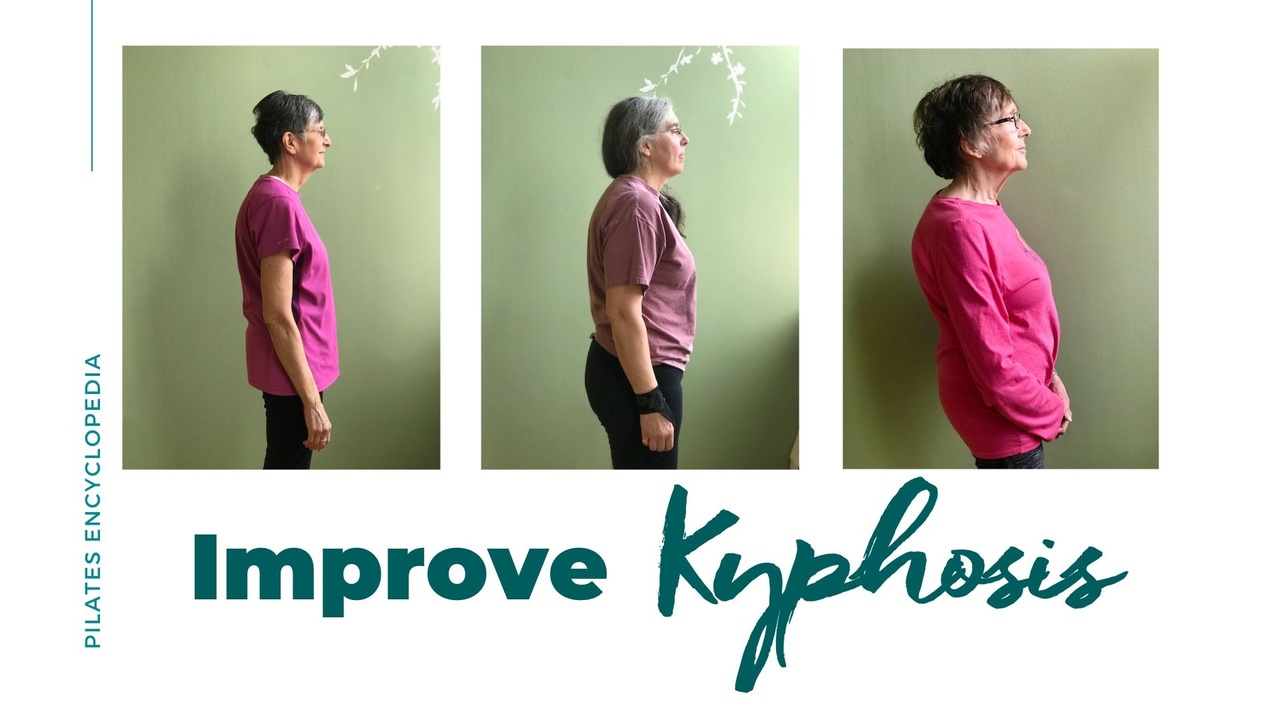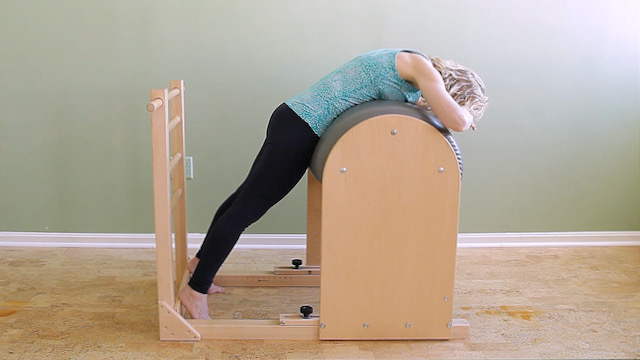How to Improve Kyphosis with Pilates (It May Surprise You!)
Dec 19, 2018
When trying to correct a kyphotic posture you have probably learned to use extension exercises. It sounds logical: since the spine is bending forward, strengthening the spinal extensor muscles by bending the spine backward will help it return to normal/neutral, right?
Well, when working on backbends with a kyphotic person you quickly realize that it’s not as easy as it sounds.
Prone exercises are usually not comfortable for somebody with pronounced kyphosis. The thoracic spine is stiff, locked into its position, and can't flatten out while lying flat on the floor in a prone position. This forces the lumbar spine into hyperextension. Merely lying prone, this student’s spine already feels the effect of an extension position due to the change of the shape of their spine.
That's why I would not choose any prone positions flat on the floor for those students.
A young person's spine might be able to yield a bit better, their tissues might have a little more "give" and they might be okay prone. The older you get, the less pliable the tissues are, and the harder it is to make a change.
Just by lying completely flat, their tissues are already under stress and they're not starting from a relaxed position. They're starting under stress and trying to add more stress on top of it.
Use The Ladder Barrel For Back Extension Exercises
One way to avoid strain in their lumbar spine when working on spine extension and back strength is to position the student on the Ladder Barrel so their shoulder girdle and upper thoracic spine can bend forward which allows them to start in their current normal relaxed position, and then try to extend the spine gently from there.

In Group Classes Use The Reformer Box
In a mat class, you can have your student lie prone on a long box. The box should end at the lower ribs or bra strap level. This allows their upper thoracic to curve down over the front of the box which positions them into their personal neutral. Now their tissues can start in a relaxed position and you can work from there.

In both of these suggestions, don't expect the client to be able to come into actual spine extension. They might come close to neutral or only reach a less flexed position. As long as they move towards neutral they are working their spinal extensor muscles.
Watch closely so you can differentiate between their thoracic extensors working (they will have a hard time turning on) and their lumbar extensors (they have been compensating for a long time, so they want to kick in but they shouldn't).
Use The Power Of The Breath
A totally different way to deal with hyperkyphosis (too much kyphosis) was presented to me recently in a world-class workshop on scoliosis.
Turns out kyphosis is actually an increase of thorax diameter between the apex of the thoracic spine and the sternum. In other words, the depth of the ribcage from front to back is more pronounced than in someone without kyphosis. This means that spine extension is actually not as effective in improving kyphosis as we thought. What!?!? 🤯
To decrease the front to back diameter of the thorax, it’s more helpful to practice lateral breathing which pushes the ribs out to the sides which in turn pulls the sternum and thoracic spines closer together.
With your hyperkyphotic students, make a point in teaching and practicing lateral breathing at the beginning of each lesson.
Related: Pilates Exercises and Cues To Improve Breathing
Elevate Head and Shoulders With a Cushion In Supine
When lying in a supine position, the head will fall back and the chin will poke up to the ceiling. To make your student comfortable, place at least a pillow under their head. If the thoracic kyphosis is severe, then it might be best to put a wedge (such as this one) or a blanket or towel under their shoulders and in addition a pillow under their head. This puts them into their personal neutral position.
Always Elongate The Spine
Another effective cue when working on improving kyphosis is axial length. This is especially true in side-bending exercises. Always lengthen lengthen lengthen. Reach your head to the ceiling and drop your tailbone to the floor.
When bending to the side, like in Mermaid or Side Sit Up, make sure to first lengthen up and then over. It's so easy to let gravity pull you down (and forward).
Imagine a piece of string, or a rubber band and let it be loose. It will curl up on the floor. Once you start stretching it in two opposite directions, all of a sudden, it's straight and it's long. By focusing on axial elongation you will flatten the thoracic curve a little bit.
Do you have a burning Pilates question?
Submit your question HERE.
I’d love to hear from you: Which exercises have worked well for you when working on improving kyphotic posture? Shoot me an email.
Inside the Pilates Encyclopedia member library, we have a whole chapter called “Pilates Protocols” in which we list appropriate exercises for injuries and pathologies. Learn more...

Big thank you to Hagit Berdishevsky for sharing this valuable knowledge with me. http://www.schrothnyc.com/










